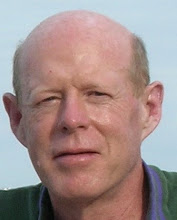 This may be all I say about the use of the semicolon since I tend to fall into the camp most clearly represented by Jim McLean. He is described by Hugh A. Mulligan, who worked as a correspondent for The Associated Press for 50 years, as his first boss, “a crusty old hard news hawk” and a newsroom character whose proudest boast was that he had never used a semicolon in his life. Mulligan quotes McLean’s regard of the semicolon as “a festering hemorrhoid hanging between two half-assed clauses.”
This may be all I say about the use of the semicolon since I tend to fall into the camp most clearly represented by Jim McLean. He is described by Hugh A. Mulligan, who worked as a correspondent for The Associated Press for 50 years, as his first boss, “a crusty old hard news hawk” and a newsroom character whose proudest boast was that he had never used a semicolon in his life. Mulligan quotes McLean’s regard of the semicolon as “a festering hemorrhoid hanging between two half-assed clauses.”Lynne Truss in her book “Eats, Shoots & Leaves” has a loftier outlook on this punctuation mark, quoting Lewis Thomas, American essayist:
“The semicolon tells you that there is still some question about the preceding full sentence; something needs to be added . . .. The period tells you that that is that; if you didn’t get all the meaning you wanted or expected, you got all the writer intended to parcel out and now you have to move along. But with the semicolon you get a pleasant feeling of expectancy; there is more to come; read on; it will get clearer.”
(“The Medusa and the Snail,” 1979)
More simply put, Truss says the semicolon is used between two related sentences where there is no conjunction such as “and” or “but,” and where a comma would be ungrammatical.
Her example: “I loved Opal Fruits; they are now called Starburst, of course.”
Semicolons are also used to separate items in a list that includes commas within it, like this quote today on Salon.com in a tribute to John Leonard, book reviewer, from his acceptance speech in 2006 when he won the National Book Critics Circle lifetime achievement award:
"My whole life I have been waving the names of writers. From these writers, for almost 50 years, I have received narrative, witness, companionship, sanctuary, shock, and steely strangeness; good advice, bad news, deep chords, hurtful discrepancy, and amazing grace.”
“The books we love, love us back. In gratitude, we should promise not to cheat on them -- not to pretend we're better than they are; not to use them as target practice, agitprop, trampolines, photo ops or stalking horses; not to sell out scruple to that scratch-and-sniff infotainment racket in which we posture in front of experience instead of engaging it, and fidget in our cynical opportunism for an angle, a spin, or a take, instead of consulting compass points of principle, and strike attitudes like matches, to admire our wiseguy profiles in the mirrors of the slicks. We are reading for our lives, not performing like seals for some fresh fish."
Get all that? We can discuss in class; there’s always more that could be said about the semicolon, and the colon, too, for that matter.

No comments:
Post a Comment